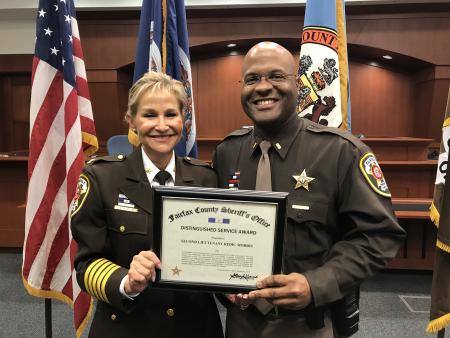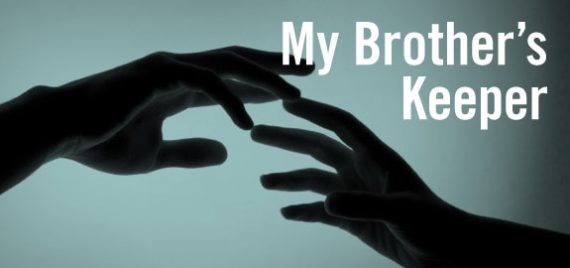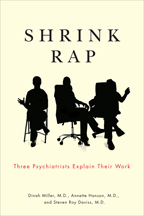
Photo: Fairfax County Sheriff Stacey A. Kincaid awards highest sheriff’s honor to CIT Lt. Redic Morris for his heroic service to individuals with mental illnesses/addictions.
(1-31-18) What can be accomplished in two years when law enforcement, court officials, mental health providers, community leaders and mental health advocates work together to stop the inappropriate incarceration of persons with mental illnesses and addictions?
Nothing short of a miracle here in Fairfax County, Virginia, where I live.
The county issued a report this week about its Diversion First program and the results were so impressive that representatives from several national organizations attended a public meeting to learn about the county’s accomplishments.*
For more than a decade, I was critical and frustrated by a lack of interest in Fairfax in jail diversion, but after the tragic death of Natasha McKenna in 2015 in our jail, Fairfax Sheriff Stacey A. Kincaid made diversion a priority, recruited allies and doggedly pushed the county forward. The result: a series of impressive changes.
Let’s begin with Crisis Intervention Team training, a crucial step in the jail diversion/sequential intercept model.
After my book, CRAZY: A Father’s Search Through America’s Mental Health Madness, was published in 2006, Patti and I donated $500 per year to our local NAMI chapter to fund an award to be given to a CIT Officer of the Year. We felt it important to encourage CIT. But we stopped in 2010 after budget cuts in 2008 virtually eliminated what scant CIT training was being done.
No longer.
Thanks to Fairfax Chief of Police Col. Edwin C. Roessler Jr., CIT training for police has become a priority, just as it has inside the jail because of Sheriff Kincaid. Their CIT and Diversion First efforts have been supported politically and financially by Board of Supervisor Chair Sharon Bulova, Supervisor John C. Cook, and Deputy County Executive David Rohrer.
Bravo!







